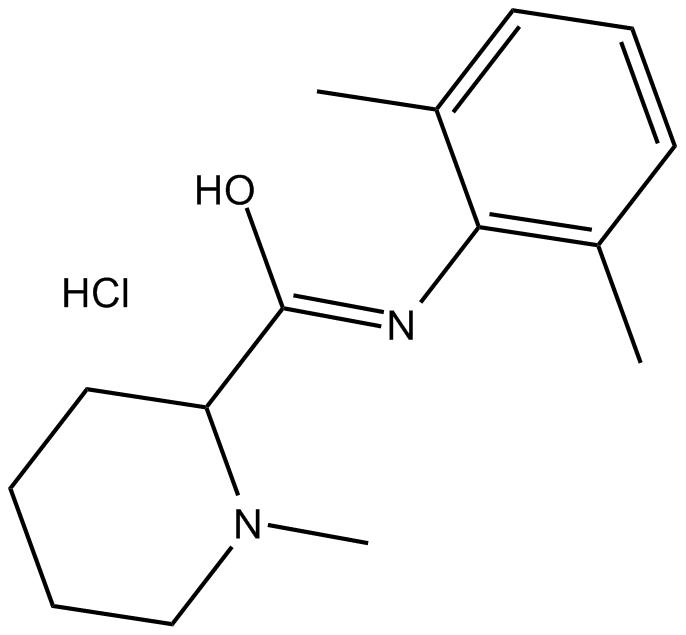Mepivacaine HCl |
| Catalog No.GC10224 |
Mepivacaine HCl binds to specific voltage-gated sodium ion channels in neuronal cell membranes, which inhibits both sodium influx and membrane depolarization.
Products are for research use only. Not for human use. We do not sell to patients.

Cas No.: 1722-62-9
Sample solution is provided at 25 µL, 10mM.
Mepivacaine hydrochloride is a tertiary amine used as a local anesthetic. Target: Sodium Channel Mepivacaine hydrochloride is a local anesthetic of the amide type. Mepivacaine hydrochloride has a reasonably rapid onset (more rapid than that of procaine) and medium duration of action (shorter than that of procaine). Mepivacaine hydrochloride is used in any infiltration and regional anesthesia. It is supplied as the hydrochloride salt of the racemate [1]. Mepivacaine hydrochloride displayed a preferential use-dependent block of Na(v)1.8, S(-)-bupivacaine displayed a preference for TTXs Na(+) channels [2].
Reference:
[1]. Burm, A.G., et al., Pharmacokinetics of the enantiomers of mepivacaine after intravenous administration of the racemate in volunteers. Anesth Analg, 1997. 84(1): p. 85-9.
[2]. Leffler, A., J. Reckzeh, and C. Nau, Block of sensory neuronal Na+ channels by the secreolytic ambroxol is associated with an interaction with local anesthetic binding sites. Eur J Pharmacol, 2010. 630(1-3): p. 19-28.
Average Rating: 5 (Based on Reviews and 32 reference(s) in Google Scholar.)
GLPBIO products are for RESEARCH USE ONLY. Please make sure your review or question is research based.
Required fields are marked with *




















